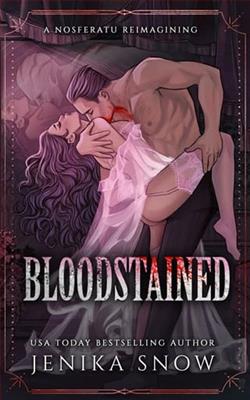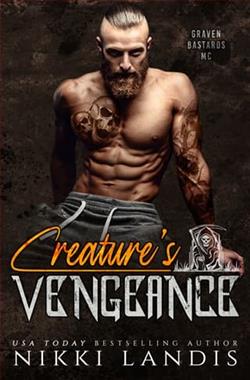Page 66 of Ruthless Cross
"Because he got this in his shipment." He held up the painting so she could see it.
"What is it about this painting that would spook Arthur? It's a gorgeous picture of a flower. I don't get it."
"This flower is an atropa belladonna, which is more popularly known as deadly nightshade," he explained. "It appears harmless with its green leaves, shiny blackberries, and reddish-brown flowers that look like little bells. But it's also lethal. It contains a toxin called atropine, which when used medically keeps muscles paralyzed during surgery and regulates heartbeat."
"Okay," she said slowly, as she processed that piece of information. "And you think this flower has something to do with Arthur's death?"
"There was a broken champagne glass found in the hallway where Arthur went over the rail. It tested positive for traces of atropine."
"You said he was incapacitated. That's why."
"It's believed that Arthur ingested the atropine and suffered paralysis, which would have made it easier for someone to push him over the railing."
"Like a woman."
"Yes," he said, meeting her now troubled gaze. "But there's more to the story."
"Then please share, because I want to understand."
"The name atropa belladonna means pretty lady. It's also tied to Atropos, one of the three Greek female fates, who were goddesses of destiny, sometimes known as Daughters of the Night."
"We're talking Greek mythology now?"
"Yes. The fates controlled the threads of each mortal's life. It was Atropos who cut the thread of life and brought death."
"How do you know all this, Flynn?"
"Because this is an infamous painting, Callie. It has been used as a calling card, a precursor to at least four known murders that the FBI refers to as the Belladonna murders. When someone receives the painting, they're marked for death."
Her eyes widened. "Are you serious? Arthur was marked for death?"
"I believe he thought so. That's why he contacted me. He must have gotten the painting in the shipment of stolen art—maybe when he came down here on Wednesday. That's why he was upset."
"Why he didn't want to meet with Layana," she put in.
"And why he thought someone was watching him. He wanted me to protect him."
"This all sounds kind of wild."
"I know. But that doesn't mean it isn't true."
"You said there are four known murders. Who were those people?"
"The first was an artist who ran his own gallery in Paris—Rafael Linderman. Not only did he display his own brilliant pieces of art, but every year he chose two or three young and emerging artists to feature. Anyone who got into that gallery became an instant success."
"How did he die?"
"He threw himself out the third-story window of his lover's house on the Rue du Bac, landing on the awning for a chocolate shop, then rolling onto the sidewalk, where he died instantly. That happened five years ago."
"What happened to his lover? Was she killed as well?" Callie asked, an eager light in her eyes.
"No. She had gone out to buy pastries. When she returned, she found him on the sidewalk. She later told the police that he had received a painting by special delivery at his home, two hours earlier, and that he had been very upset by it. He'd told her he'd thought the artist was crazy. When the investigators searched her home, they were unable to find the painting. But they did discover a photo of the painting that was left in its place. There was a message scrawled across the front:You deserve to be punished."
"That's fascinating. What happened next?"
"A year later, an art dealer in Colorado was rock climbing in the Rockies. His harness broke and he fell a hundred feet to his death. His wife told the police that he had gone up to the mountains to meet a friend, but she had no name, and no one was able to discover who else he'd been climbing with. The wife also said he'd been upset by a painting he'd received the day before. He'd showed it to her, and it was a painting of the deadly nightshade. Upon searching the house and the gallery, the painting was not discovered. But they found a similar photo with the same disturbing message."
"Crazy," she murmured. "So the painting shows up, and the person dies. And they always fall. Is that what happened in the other two cases?"















